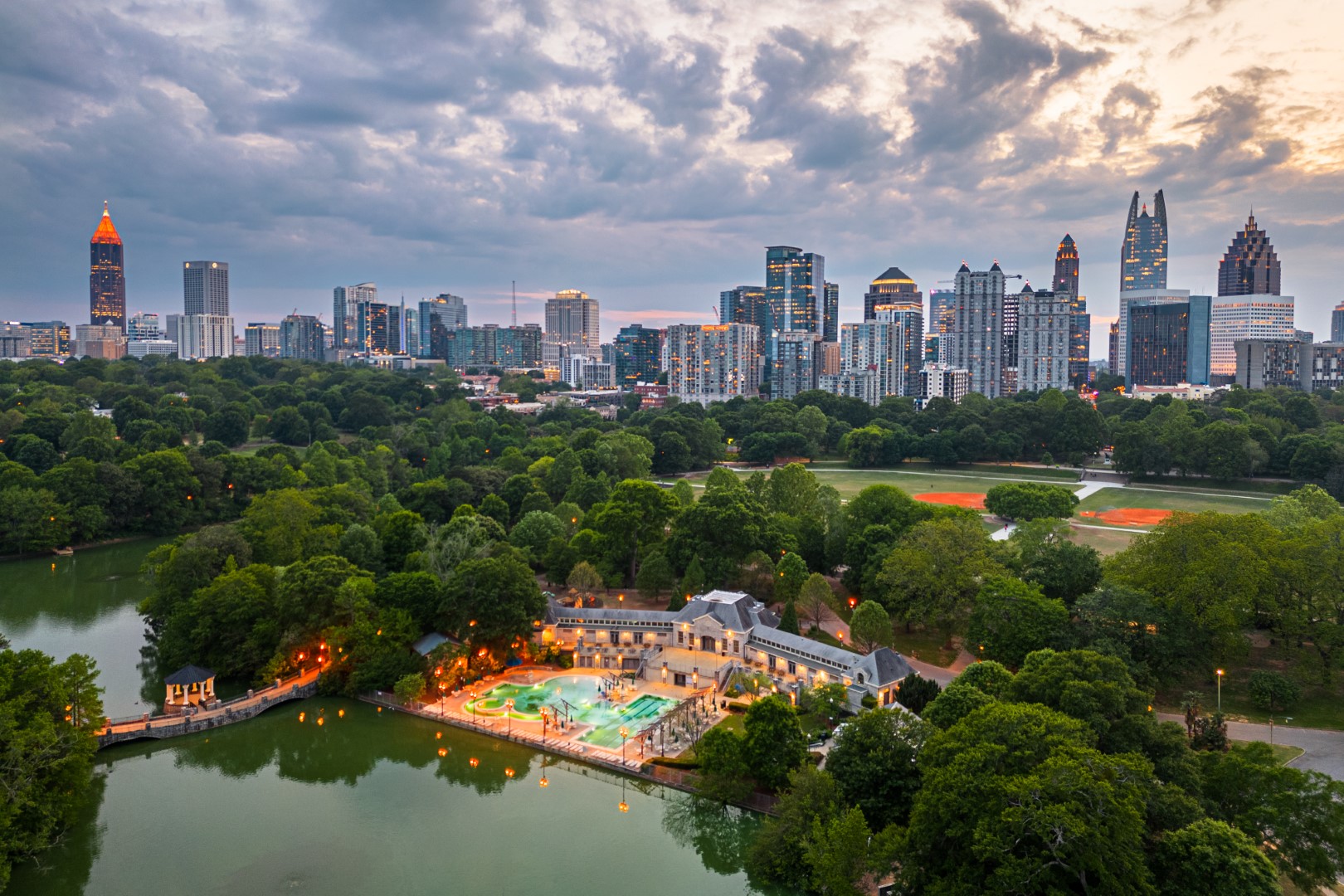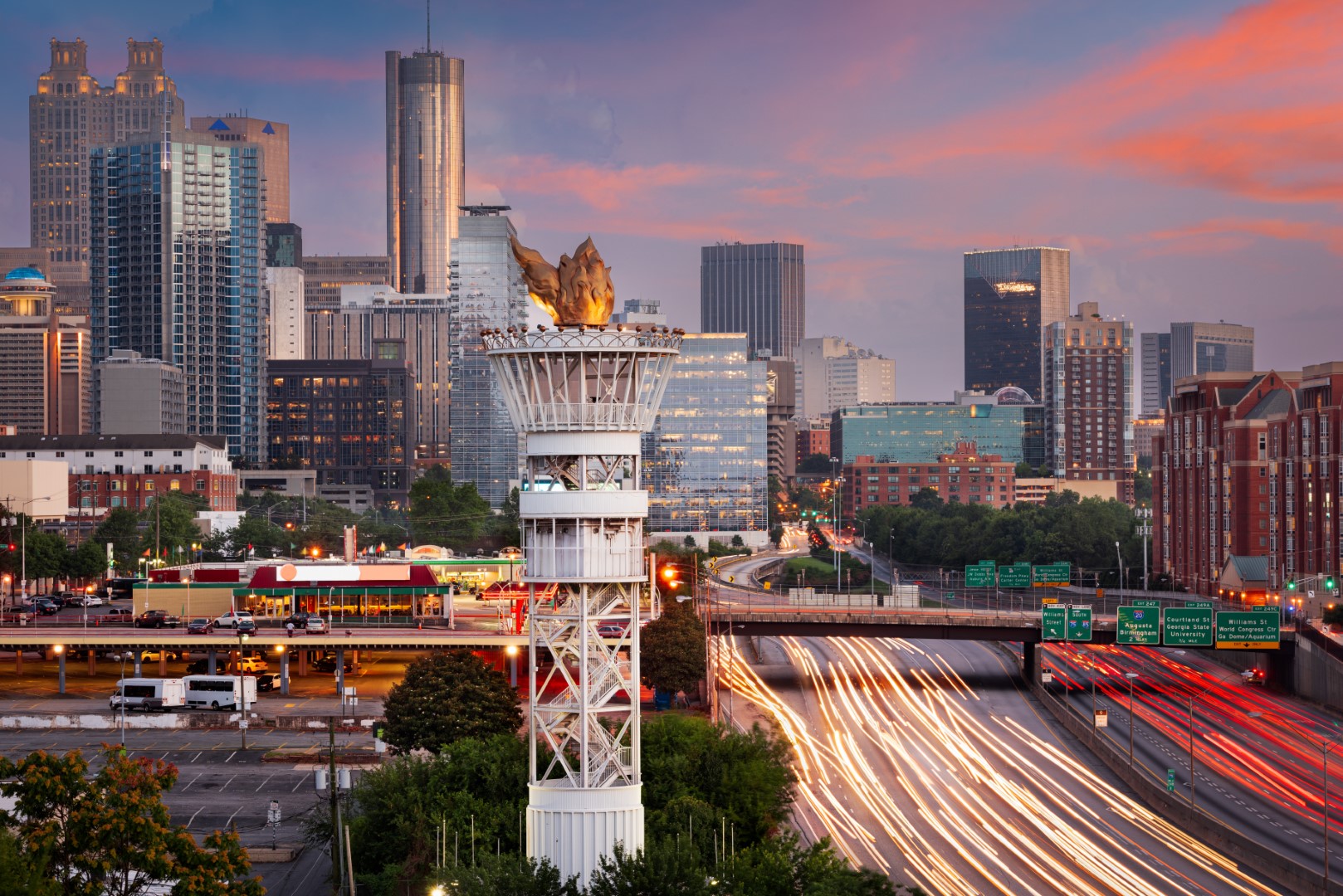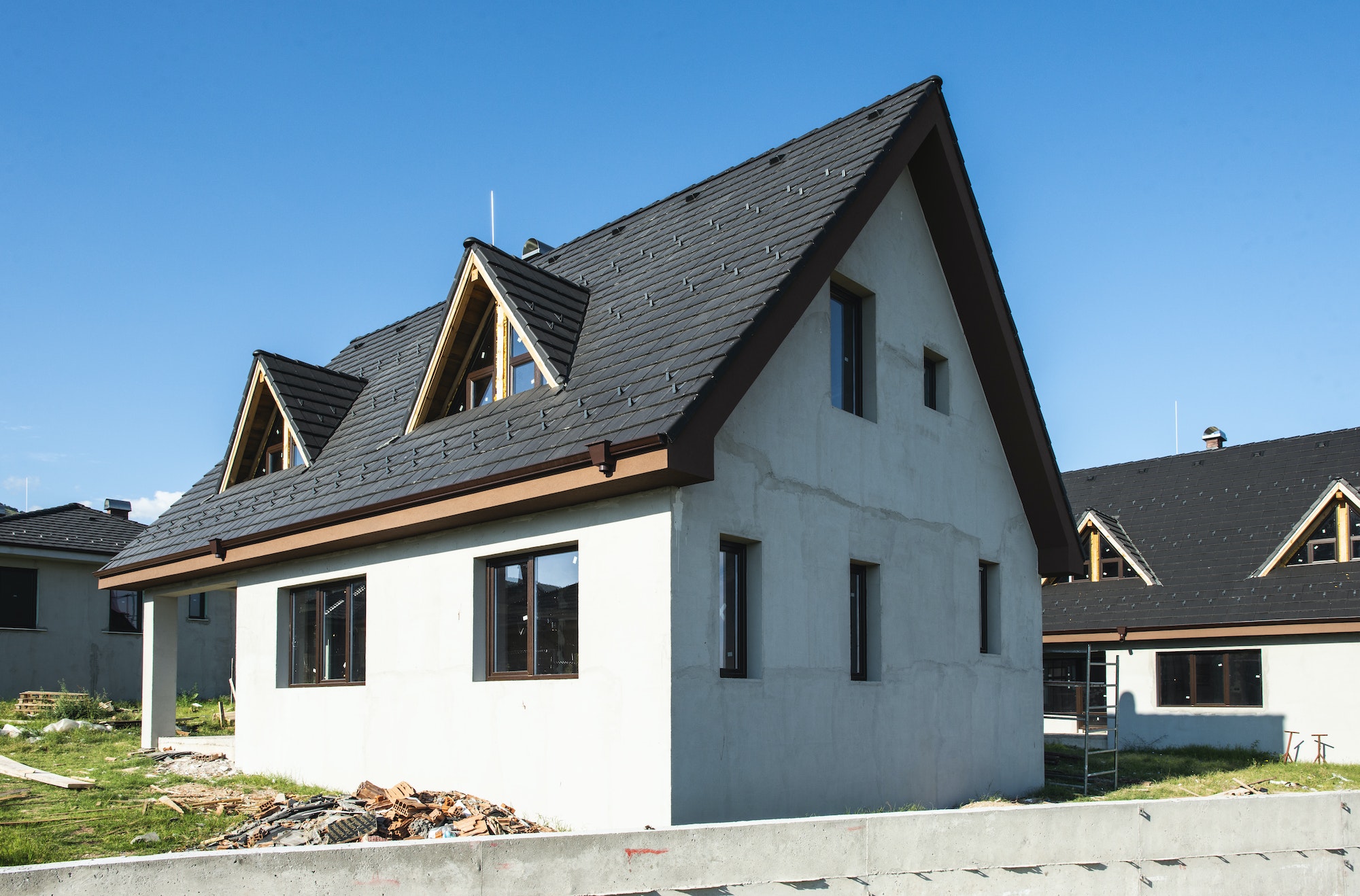High rises and minimalistic glass towers are common sights as you walk through the busy streets of major metropolitan cities in the US. But Atlanta offers much more than that. When exploring the dynamic world of Atlanta’s architecture, one immediately notices the city’s unique blend of tradition and innovation.
As you plan your move to this bustling metropolis, expect to encounter a skyline that tells a story of growth and diversity. From the sleek, modern towers punctuating Midtown’s landscape to the charming, historic homes in neighborhoods like Grant Park, Atlanta’s architectural trends stem from its rich cultural tapestry.
Whether you’re a long-time admirer of urban design or simply looking for a fresh start in a vibrant city, Atlanta’s architectural scene will surely leave a lasting impression.
What To Expect From Atlanta’s Architecture

This is a list of every architectural aspect you will see stepping into Atlanta.
Modern High-Rises in Midtown
Midtown Atlanta is transforming, with its skyline dominated by new high-rises. These buildings are not just tall and striking but designed with energy efficiency in mind, using materials and systems that reduce environmental impact.
Inside, you’ll find advanced home automation systems, making living both comfortable and high-tech. Midtown is also a bustling hub of activity, where people work in state-of-the-art office spaces, live in stylish apartments, and enjoy contemporary art galleries and trendy eateries, all within walking distance.
Historic Neighborhoods
Atlanta’s commitment to preserving its history is evident in neighborhoods like Grant Park and Inman Park. Here, the city has done a tremendous job restoring some over a century-old Victorian homes, maintaining their original charm while offering modern amenities.
These areas are more than just housing; they are communities with a rich history and identity, often hosting local markets, festivals, and community events that bring residents together.
Green Spaces in the City
The BeltLine project in Atlanta is a prime example of urban renewal, transforming old railway tracks into vibrant green spaces. This initiative has created a network of parks, community gardens, and miles of trails for walking and biking, connecting different parts of the city.
This not just adds greenery but creates healthier, more connected communities and offers residents a daily escape from the urban hustle.
Cutting-Edge Building Designs
Atlanta is not only about its history. The city’s architectural landscape is evolving with innovative designs. The Mercedes-Benz Stadium stands out with its unique retractable roof and energy-efficient design, while the Atlanta Central Library is a modern marvel of concrete and glass.
Beyond being functional, these buildings are visual landmarks, showcasing Atlanta’s commitment to pushing architectural boundaries.
Mixing Homes, Shops, and Offices
Mixed-use developments are changing how Atlantans live and work. These complexes combine residential units with offices, retail shops, and recreational facilities. This approach promotes a more integrated urban experience, reducing the need for long commutes and fostering a sense of community.
Residents enjoy the convenience of living near where they work and play, a lifestyle increasingly sought after in modern cities.
Housing for Everyone
Atlanta’s diverse housing market is a key factor in its inclusive urban planning. The variety of Atlanta homes ranges from luxury condominiums with breathtaking city views to cozy, single-family homes in quiet suburbs. Affordable housing options in new developments are also in the plans, ensuring the city remains affordable and convenient for residents of all income levels.
Key Takeaways
Atlanta’s architectural trends paint a picture of a city that looks forward and embraces the future while being true and rooted in its past. Modern high-rises in Midtown trail the city’s skyline, offering advanced, eco-friendly living. Historic neighborhoods like Grant Park and Inman Park preserve the past’s charm with beautifully restored homes.
The rise of mixed-use developments reflects a trend towards convenient, community-centric living. The diverse housing market ensures that the city remains accessible and welcoming to people from all walks of life.
Atlanta’s architectural evolution creates a vibrant, diverse, and sustainable environment for all who call it home.
Discover more from Futurist Architecture
Subscribe to get the latest posts sent to your email.




